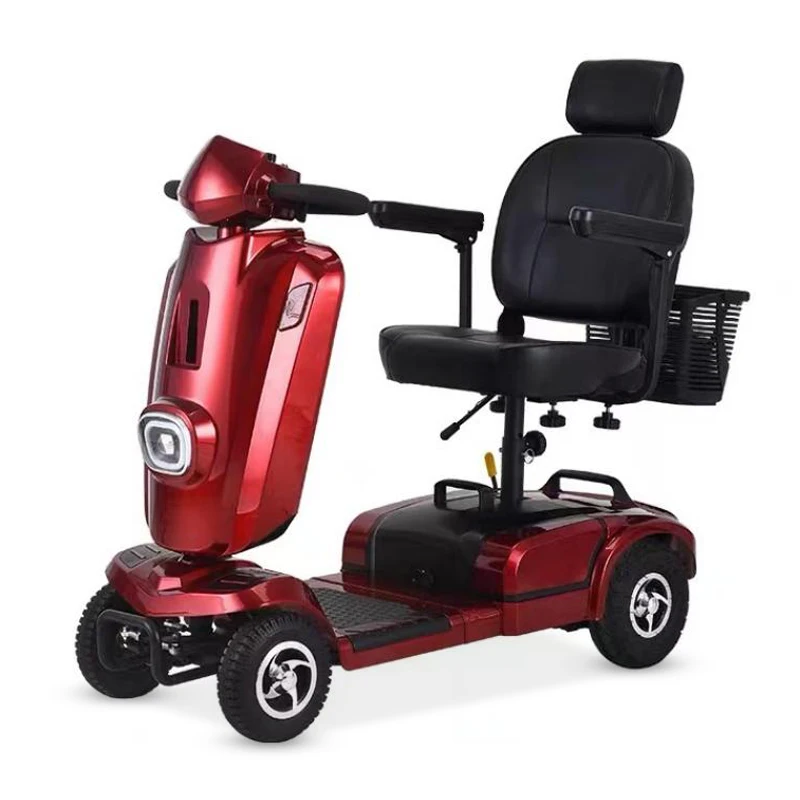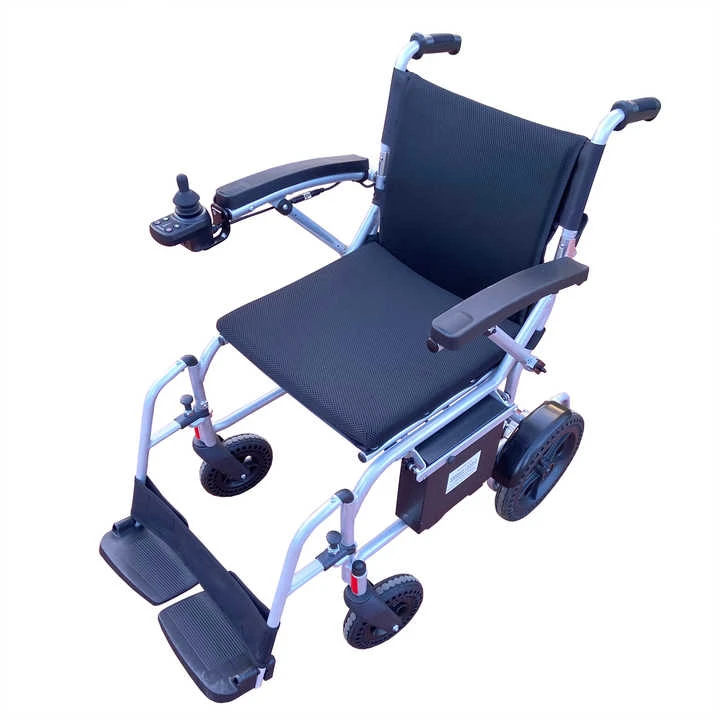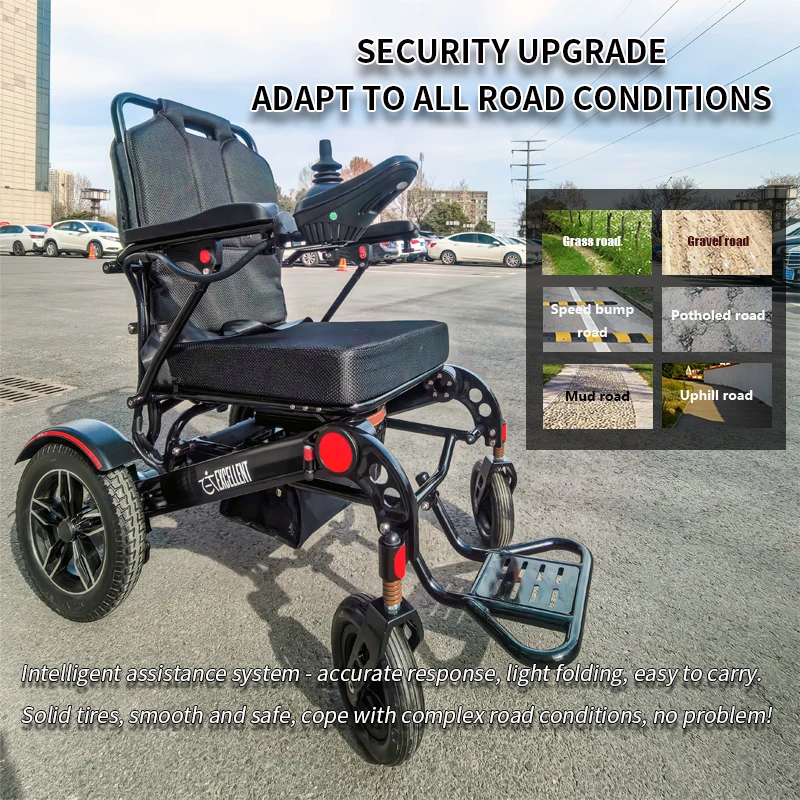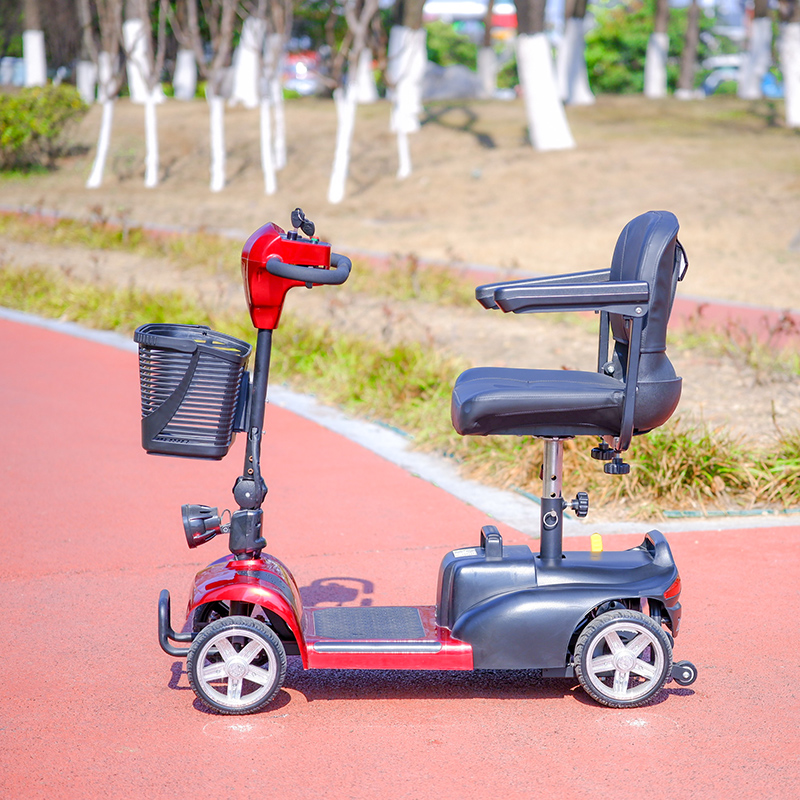Lightweight Foldable Electric Wheelchairs: Revolutionizing B2B Mobility Solutions in Healthcare and Elderly Care
Amidst the accelerating aging population and the surging demand for accessible mobility solutions, lightweight foldable electric wheelchairs are emerging as pivotal innovations in healthcare, elderly care, and logistics sectors. These products address the limitations of traditional wheelchairs—bulkiness and portability challenges—through modular design, energy efficiency, and intelligent safety features, offering B2B clients functional and cost-effective alternatives. This analysis explores market drivers, technological advancements, and commercial value propositions from three dimensions: industry needs, technical innovations, and B2B application landscapes.

I. Market Drivers: The Imperative for Portability and Stability
The global demand for mobility aids is expanding rapidly. By 2033, the electric wheelchair market is projected to reach $11 billion, growing at a CAGR of 10% . Key drivers for portable electric wheelchairs include:
- Aging Demographics: Over 1 billion people globally live with disabilities, with seniors requiring assistive devices for daily mobility. Healthcare facilities, nursing homes, and home care providers urgently need efficient mobility solutions.
- Urbanization and Accessibility: Public spaces (e.g., airports, shopping malls) mandate barrier-free infrastructure, where compact, foldable designs enable seamless navigation and storage.
- Logistics Optimization: E-commerce and medical supply chains demand agile transport tools that can maneuver narrow aisles and tight spaces.
II. Technical Advancements: Synergy of Portability and Intelligence
The core competitiveness of lightweight foldable electric wheelchairs lies in balancing portability with advanced functionality:
- Ultra-Lightweight Structures
- Aerospace-grade aluminum or carbon fiber frames reduce weight to 15–20 kg while maintaining load capacities exceeding 120 kg. Modular designs allow quick disassembly for transport, lowering logistics costs.
- Extended Battery Life
- Lithium-ion batteries (e.g., LiFePO4) provide 20–35 km ranges on a single charge, supported by fast-charging technologies (2–3 hours full charge). Smart Battery Management Systems (BMS) optimize energy use, extending battery lifespan to over 1,000 cycles.
- Safety and Smart Controls
- Anti-tip sensors, electromagnetic brakes, and multi-stage anti-slip tires enhance stability on slopes and uneven terrain. IoT integration enables remote monitoring of battery status and customizable settings (e.g., seat angle, speed) via mobile apps.
III. B2B Applications: From Healthcare to Logistics
Lightweight foldable electric wheelchairs offer tailored solutions across industries:
- Healthcare and Elderly Care
- In-Hospital Transfers: Replace manual wheelchairs for staff efficiency; foldable designs fit into elevators and narrow corridors.
- Rehabilitation Training: Adjustable seat heights and resistance modes support physical therapy sessions.
- Community and Home Care
- Home Accessibility: Compact storage in small apartments; nighttime lighting and emergency alerts improve safety for seniors living alone.
- Rental Services: Cost-sharing models for community centers or hospitals optimize equipment utilization.
- Logistics and Public Services
- Medical Deliveries: Navigate hospital hallways and airport terminals for efficient supply transport.
- Tourism and Events: Deploy as rental devices in parks or large venues to enhance accessibility for visitors with disabilities.
IV. Commercial Value: Cost Efficiency and Competitive Differentiation
For B2B clients, lightweight foldable electric wheelchairs deliver measurable ROI:
- Operational Cost Reduction
- Reduced transportation and warehousing costs due to compact dimensions.
- Lower maintenance expenses (e.g., maintenance-free tires) and extended product lifespans.
- Service Differentiation
- Healthcare providers can adopt “Device-as-a-Service” (DaaS) models, charging per-use fees for transport services.
- Elderly care facilities leverage foldable chairs as premium offerings to attract clients.
- Policy Incentives
- Compliance with accessibility standards qualifies businesses for government subsidies and procurement eligibility, particularly in aging societies like Japan and Germany.
V. Future Trends: Customization and Ecosystem Integration
Emerging innovations are shaping the next generation of lightweight electric wheelchairs:
- AI-Powered Navigation: Obstacle detection and path-planning algorithms for autonomous indoor navigation.
- Hot-Swappable Batteries: 5-minute swaps for 2-hour operation, addressing range anxiety.
- Ecosystem Partnerships: Collaborations with ride-sharing platforms and hospitals to create integrated “device-service-data” ecosystems.
Conclusion
Lightweight foldable electric wheelchairs are not merely technological advancements but strategic responses to global accessibility demands. By harmonizing portability, durability, and intelligence, they empower healthcare providers, logistics firms, and governments to deliver superior mobility solutions. As aging populations and urbanization intensify, these innovations will redefine mobility norms, creating sustainable revenue streams and operational efficiencies for B2B stakeholders. Companies that strategically align product features with niche market needs—such as hospital-grade portability or logistics adaptability—will lead this transformative wave.





.png)


